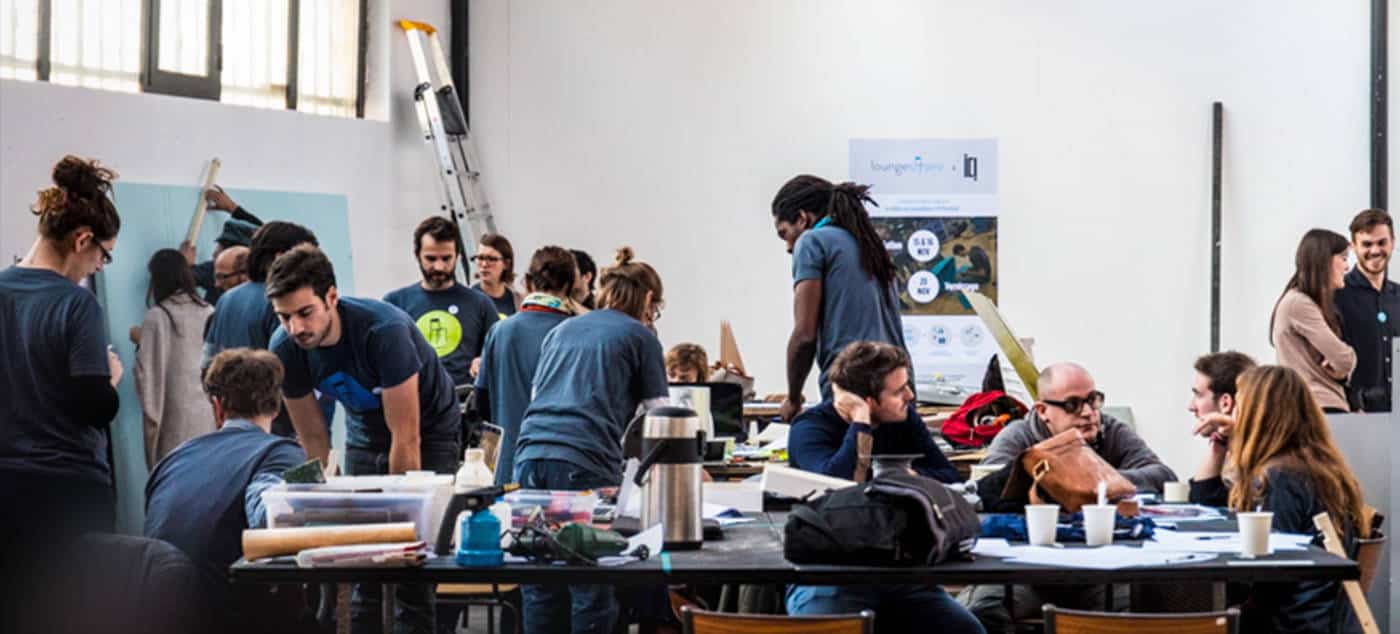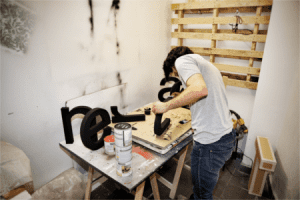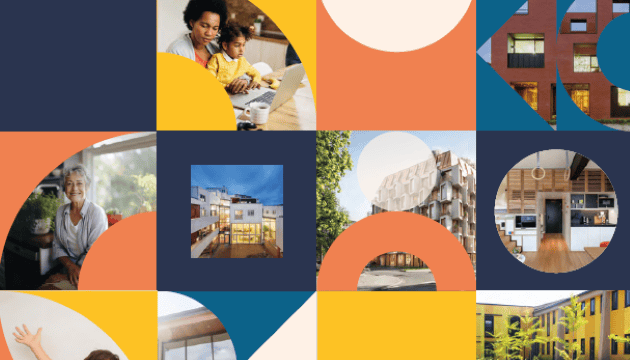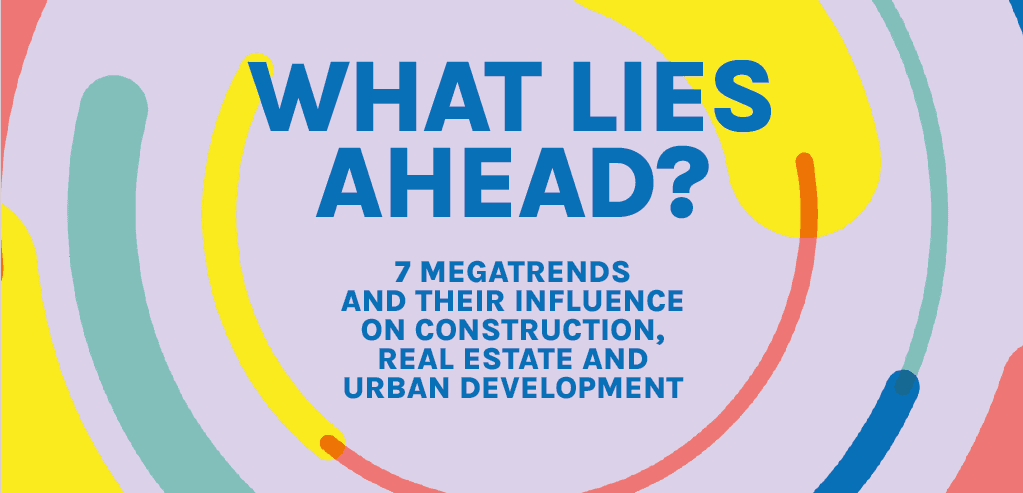
FabLab: stimulating creativity at local level
3 minutes of reading
A key player in urban planning, Bouygues Construction is interested in the new practices that will be implemented in the cities of the future.

Reflecting this, Group projects include Third Places, hybrid areas opening up new possibilities in work, services and leisure, creating a new neighbourhood dynamic for local residents. These Third Places include the Fablabs, which are developing at high speed, buoyed by the DIY wave sweeping the entire world. Let’s take a closer look at these drivers of innovation.
 The main purpose of the FabLab is to promote knowledge-sharing and exchange amongst a target audience who want to manufacture, rather than purchase.
They provide a support team and digital technology, such as 3D printers, for all, whether individuals or professionals. The goal of this process is to create a local manufacturing subsidiary. Somewhere between a workshop and a factory, these creation and manufacturing spaces offer artists, engineers, artisans, and entrepreneurs the opportunity to design, prototype, produce, and sell their creations.
Bouygues Construction is interested in these new small-scale working areas and their development, and is keen to include them in its urban projects in order to provide its customers with equipment that is more flexible and sustainable.
The main purpose of the FabLab is to promote knowledge-sharing and exchange amongst a target audience who want to manufacture, rather than purchase.
They provide a support team and digital technology, such as 3D printers, for all, whether individuals or professionals. The goal of this process is to create a local manufacturing subsidiary. Somewhere between a workshop and a factory, these creation and manufacturing spaces offer artists, engineers, artisans, and entrepreneurs the opportunity to design, prototype, produce, and sell their creations.
Bouygues Construction is interested in these new small-scale working areas and their development, and is keen to include them in its urban projects in order to provide its customers with equipment that is more flexible and sustainable.
 centre, the Fablab may be designed as a simple shared working area placing high-performance tools at the disposal of local residents.
Nicolas Bard, co-founder of MakerSpace Ici Montreuil and Virginie Bursi, head of business development and partnerships with the XXL project in Marseille, share their expertise in this area:
centre, the Fablab may be designed as a simple shared working area placing high-performance tools at the disposal of local residents.
Nicolas Bard, co-founder of MakerSpace Ici Montreuil and Virginie Bursi, head of business development and partnerships with the XXL project in Marseille, share their expertise in this area:
What is a Fablab?
 The main purpose of the FabLab is to promote knowledge-sharing and exchange amongst a target audience who want to manufacture, rather than purchase.
They provide a support team and digital technology, such as 3D printers, for all, whether individuals or professionals. The goal of this process is to create a local manufacturing subsidiary. Somewhere between a workshop and a factory, these creation and manufacturing spaces offer artists, engineers, artisans, and entrepreneurs the opportunity to design, prototype, produce, and sell their creations.
Bouygues Construction is interested in these new small-scale working areas and their development, and is keen to include them in its urban projects in order to provide its customers with equipment that is more flexible and sustainable.
The main purpose of the FabLab is to promote knowledge-sharing and exchange amongst a target audience who want to manufacture, rather than purchase.
They provide a support team and digital technology, such as 3D printers, for all, whether individuals or professionals. The goal of this process is to create a local manufacturing subsidiary. Somewhere between a workshop and a factory, these creation and manufacturing spaces offer artists, engineers, artisans, and entrepreneurs the opportunity to design, prototype, produce, and sell their creations.
Bouygues Construction is interested in these new small-scale working areas and their development, and is keen to include them in its urban projects in order to provide its customers with equipment that is more flexible and sustainable.
Focus ≠1: the local FabLab
A meeting place that repositions the manufacturing process in the city centre, the Fablab may be designed as a simple shared working area placing high-performance tools at the disposal of local residents.
Nicolas Bard, co-founder of MakerSpace Ici Montreuil and Virginie Bursi, head of business development and partnerships with the XXL project in Marseille, share their expertise in this area:
centre, the Fablab may be designed as a simple shared working area placing high-performance tools at the disposal of local residents.
Nicolas Bard, co-founder of MakerSpace Ici Montreuil and Virginie Bursi, head of business development and partnerships with the XXL project in Marseille, share their expertise in this area:
More reading
Read also




What lies ahead? 7 megatrends and their influence on construction, real estate and urban development
Article
20 minutes of reading

